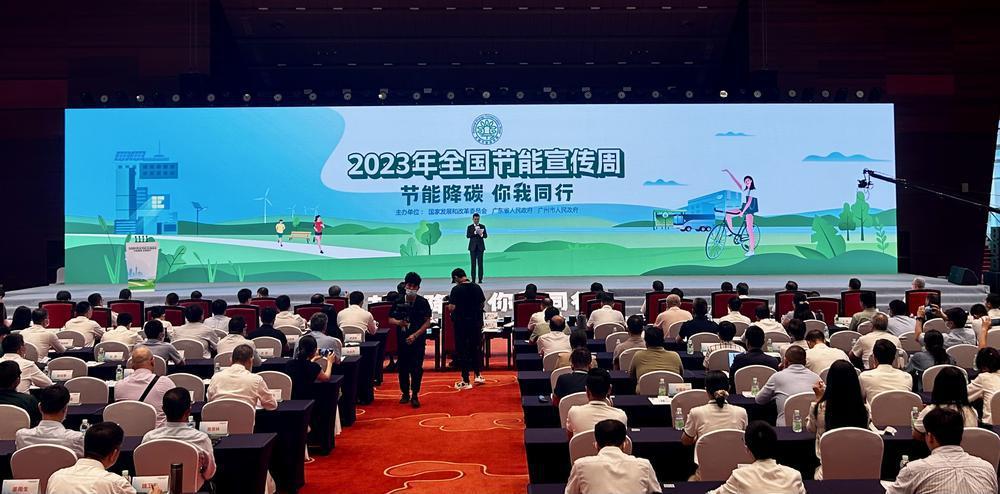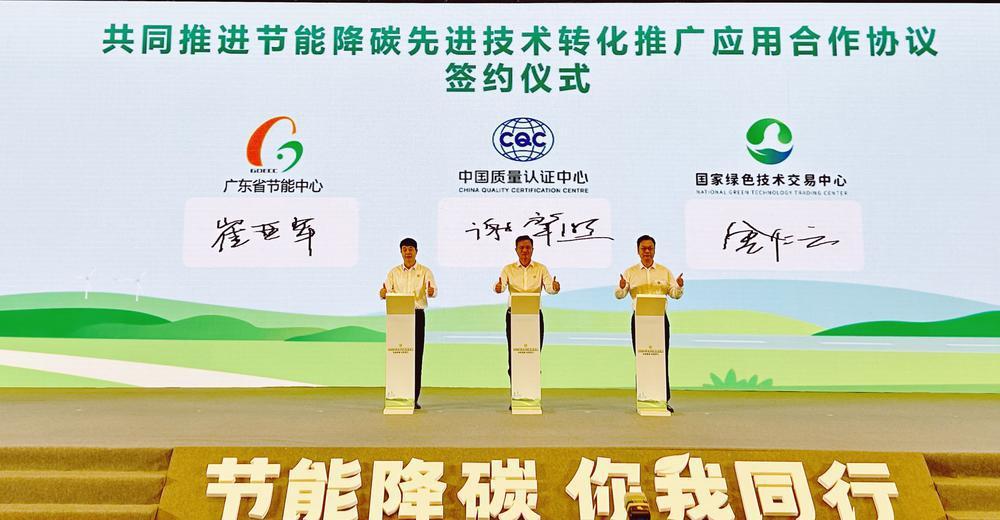
The opening ceremony of the 33rd National Energy Efficiency Promotion Week in China kicked off in Guangzhou on July 10th. The theme of this year's weeklong campaign is " Let's Work Together on Energy Conservation and Carbon Reduction".

Over the past ten years, China has achieved a cumulative reduction of 26.4% in energy consumption per unit of GDP, supporting an average annual economic growth of 6.2%, with only an average annual energy consumption growth of 3%. In other words, it means that China has saved about 1.4 billion tons of standard coal and reduced CO2 emissions by nearly 3 billion tons. Therefore, China has been among the countries with the fastest energy intensity reduction in the world, overfulfilling the target of cutting carbon emission intensity as a commitment to the international community, and contributing to global climate change.
Guangdong has also made its own contribution to such achievement. It is reported that in 2022, Guangdong established 1.4 million kilowatts of offshore wind turbines; the annual production of new energy vehicles reached 1.297 million units, accounting for 18% of the national total; green buildings account for over 80%in the new floor space of urban civic buildings in the province. In terms of energy consumption, last year, Guangdong consumed a total of 365 million tons of standard coal, accounting for approximately 6.7% of the national consumption, supporting approximately 10.7% of the national economy.
At the ceremony, Guangdong Energy Conservation Center, China Quality Certification Center, and National Green Technology Trading Center jointly signed a cooperation agreement, aiming to promote the R&D, promotion, and application of energy-saving and carbon emission reduction technologies. The "White Paper for Energy Efficiency Standard and Labelling Program (2023)" was also released at the ceremony. It writes that the current energy efficiency standard system in China is being continuously optimized with many already formed: there are a total of 364 standards, including 108 mandatory energy consumption limit standards, 66 mandatory energy efficiency standards, and 190 recommended standards.
What's more,12 industry associations and 19 key enterprises from the fields like electricity, steel, building materials, petrochemicals, non-ferrous metals, textiles, light industry, coal, energy conservation and environmental protection, and circular economy jointly signed and released the "Declaration on Carbon Peak and Carbon Neutrality in Key Industries", calling for a joint action from all sectors to prioritize ecological protection, conserve resources and use them efficiently, and pursue green and low-carbon development.
中国十年来少排放二氧化碳近30亿吨
7月10日,中国第33个节能宣传周启动仪式在穗举行。今年全国节能宣传周主题为“节能降碳,你我同行”。
10年来,中国能耗强度累计降低了26.4%,以年均3%的能源消费增速支撑了年均6.2%的经济增长,相当于少用了约14亿吨标准煤,少排放二氧化碳近30亿吨。中国是全球能耗强度降低最快的国家之一,超额完成了向国际社会承诺的碳排放强度下降目标,为全球应对气候变化作出了中国的贡献。
据介绍,2022年广东新增海上风电装机140万千瓦;全年新增新能源汽车产量129.7万辆次,规模占全国的18%;在全省新增城镇级民用建筑中,绿色建筑占比80%以上。去年,广东省能耗总量3.65亿吨标准煤,以占全国约6.7%的能源消耗支撑了全国约10.7%的经济总量。
会上,广东省节能中心、中国质量认证中心、国家绿色技术交易中心共同签署节能降碳技术推广合作协议,共同推动节能降碳先进技术研发和推广应用,并同步发布了《能效标准标识白皮书(2023年版)》。《白皮书》中提到,当前我国节能标准体系正在不断优化完善,共形成了364项标准,其中包含108项强制性能耗限额标准、66项强制性能效标准和190项推荐性标准。
来自电力、钢铁、建材、石化化工、有色金属、纺织、轻工、煤炭、节能环保、循环经济等领域的12家行业协会和19家重点企业共同签署发布《重点行业领域碳达峰碳中和宣言》,号召各行各业共同行动,大力推进生态优先、节约集约、绿色低碳发展。
文、图|羊城晚报全媒体记者 杭莹 董鹏程
译|白心怡
责编|王瑜瑛
校对|潘丽玲









